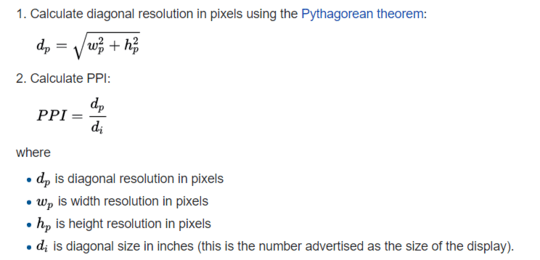The site correctly shows an aspect ratio of 16:10 for the X250, which is unusual compared to the far more common 16:9. However, it doesn't show any aspect ratio for the X260, so it probably assumes the far more common 16:9 as a default value.
A 12.5" diagonal with an aspect ratio of 16:9 means a screen area of 66.8 in^2. So, the square-pixels-per-square-inch is (1920 pixels * 1080 pixels) / (66.8 in^2). Take the square root of that to get pixels-per-inch (PPI), and it's 176, just like the website shows.
The math for the X260's PPI looks correct given that it's missing the aspect ratio and probably just defaulting to the common 16:9.
PS - Wikipedia's equation for PPI, as cited in the currently accepted answer, is simply wrong. PPI is the square root of the number of pixels over the area in which they're displayed. This doesn't reduce to the expression given on Wikipedia.

8By screen-size sometimes they mean the sized of the actual screen and sometimes the size of the laptop lid (LCD + surrounding bezel). It is just a a matter of whatever the marketeer that wrote the information thought what would sound better. Working backwards from PPI and resolution to screen-size is more reliable in my experience. – Tonny – 2016-12-24T15:45:08.690
7I believe the error is actually on the Specout web site. Lenovo's own site provides specs of 12.5" 1920x1080 for both units. Other sites providing specs for both units state 176 ppi for both models. – barbecue – 2016-12-24T16:17:42.580
7If your view or definite conclusion is that "You Cannot", then You should really write as the top sentence.. it's far clearer, that way the reader doesn't have to read through a mathematical formula before finding the simple answer. – barlop – 2016-12-24T22:34:49.817